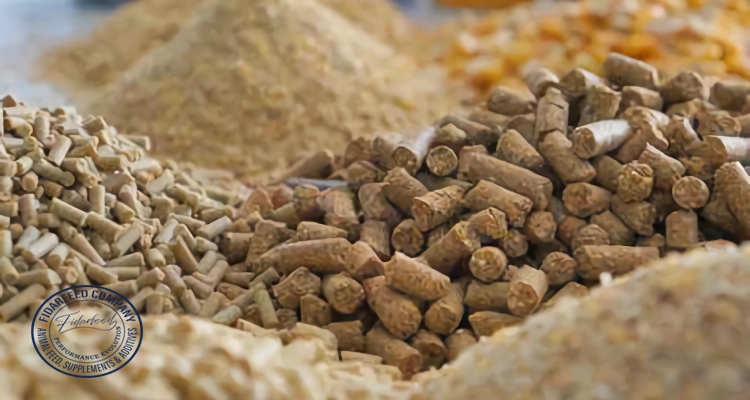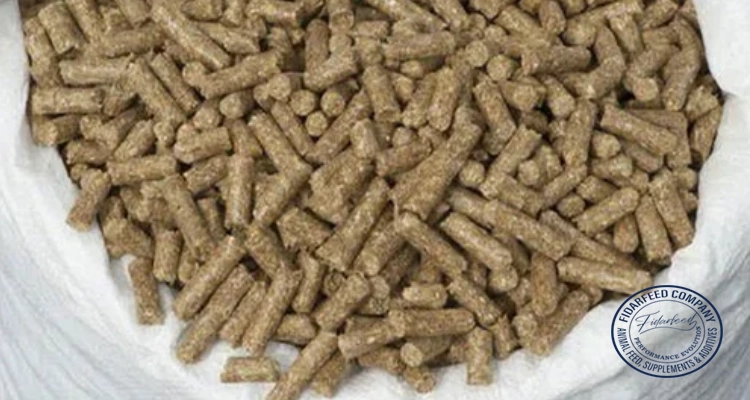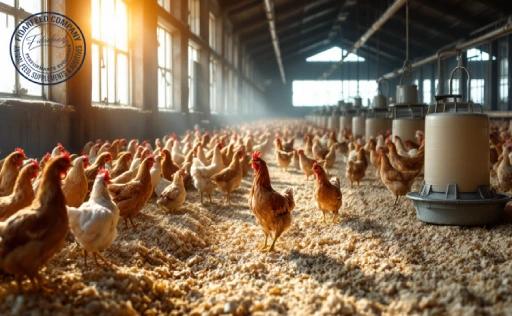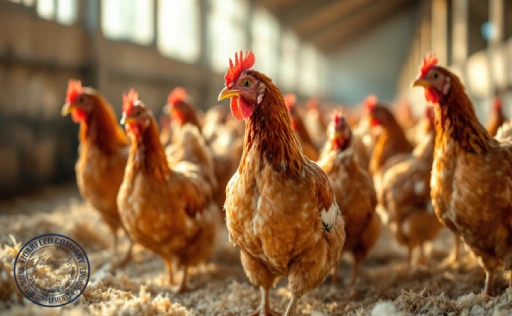
Bulk animal nutrition ingredients are the backbone of a healthy and productive livestock operation. Whether you’re raising a small backyard flock or managing a large-scale commercial farm, the quality of the nutrition you provide directly impacts the well-being, performance, and profitability of your animals. In this article, we’ll guide you through everything you need to know about sourcing bulk animal nutrition ingredients—from what’s in them, why they matter, where to buy them, and the red flags you should never ignore. Let’s dig in.
Why Bulk Animal Nutrition Ingredients Matter for Breeders
Feeding animals isn’t just about keeping them full—it’s about fueling optimal growth, reproduction, and immunity. For breeders, this means having consistent access to reliable, nutrient-rich feed.
Buying in bulk isn’t just a budget-saving move (though that’s a major benefit); it also brings consistency. When feed changes frequently, animals often react poorly—reduced appetite, digestive stress, or lower productivity. Bulk purchasing ensures you’re delivering a stable formula over time, which is especially crucial for sensitive animals like young chicks or lactating sows.
Learn more about: Active Probiotic Yeast for Large animal
Take for example a poultry breeder in Alberta who switched from buying mixed feed bags to sourcing soybean meal and maize in bulk. Not only did their monthly feed cost drop by 15%, but their birds’ weight gain consistency improved due to the stable nutrient input.
Understanding Bulk Animal Nutrition Ingredients: What Are You Really Buying?
When you purchase bulk animal nutrition ingredients, you’re not just buying “feed”—you’re investing in a blend of carefully selected nutritional building blocks.
Here’s a breakdown of what’s commonly included:
-
Grains: Corn, wheat, barley, and sorghum are common energy sources.
-
Protein sources: Soybean meal, canola meal, fish meal, and dried distillers grains (DDGS).
-
Amino acids: Lysine and methionine are often supplemented to balance protein.
Learn more about: Bulk Discounts on Prepared Animal Feed: Special Sale for Farmers
-
Vitamins and minerals: Calcium, phosphorus, zinc, and essential vitamins A, D, and E are included for bone health and metabolic function.
-
Fats and oils: Added for extra energy, especially for high-producing animals.
-
Additives: Probiotics, prebiotics, and enzymes can boost digestion and gut health.
Understanding what goes into your mix helps you tailor it to your herd’s specific needs and improves the effectiveness of your feeding program.

Key Benefits of Buying Bulk Animal Nutrition Ingredients
There are compelling, practical reasons why breeders opt for bulk purchasing:
-
Lower cost per unit: Economies of scale reduce overall feed expenses.
-
Supply reliability: Having inventory on-hand prevents disruptions during high-demand seasons or market shortages.
Learn more about: Top Factors to Consider When Choosing Animal Bulk Probiotic Suppliers
-
Customization: You can fine-tune formulations based on the growth stage or production cycle of your animals.
-
Inventory control: Bulk purchases allow for better planning and fewer last-minute trips to suppliers.
For instance, a goat breeder in Texas who previously bought pre-mixed feed found that switching to bulk soybean meal and alfalfa pellets not only saved money but allowed for diet tweaks during pregnancy season.
What to Look for When Buying Bulk Animal Nutrition Ingredients
Not all bulk feed is created equal. Here’s what to check before buying:
-
Ingredient quality: Look for clean, mold-free grains and verified nutrient contents.
-
Supplier reputation: Choose vendors with solid references, certifications (like GMP+ or HACCP), and transparency.
Learn more about: How to Find the Best Bulk Feed Suppliers for Your Needs
-
Bioavailability: High nutrient content is meaningless if the animal can’t absorb it—check for ingredients with proven digestibility.
-
Shelf life and storage: Ensure the ingredients can be stored without spoiling, clumping, or attracting pests.
Ask suppliers for lab analysis reports and don’t be afraid to request samples before a large purchase.

Red Flags: Mistakes to Avoid When Purchasing in Bulk
Being cautious pays off. Here are some common—and costly—mistakes to avoid:
-
Going for the cheapest option: Lower prices often come at the cost of lower quality, contamination, or poor nutrient value.
-
Overlooking sourcing transparency: If a supplier can’t tell you where their ingredients come from, it’s a red flag.
Learn more about: Bulk Cattle Feed Prices: A Guide to Affordable Buying
-
Skipping lab testing: Every batch should be tested for quality, especially for mycotoxins and heavy metals.
-
Ignoring storage needs: Improper storage can lead to spoilage, rodent infestation, and waste.
Take the case of a cattle breeder who bought corn gluten feed from an unverified online seller. Without proper testing, they ended up with a product contaminated by aflatoxins—costing them hundreds in vet bills and performance loss.
Where to Buy Bulk Animal Nutrition Ingredients: Trusted Sources for Breeders
Reliable sourcing is essential for consistent animal performance. Here are some trusted avenues to explore:
-
Local agricultural cooperatives: These often offer bulk-order services and support for regional breeders.
-
Specialized international suppliers: Reputable global providers (like us) offer direct access to high-quality ingredients tailored for livestock, poultry, and aquaculture farms.
-
Feed mills: Many mills provide custom blends and delivery services tailored to local needs.
-
Direct from manufacturers: Building partnerships with producers ensures better pricing, traceability, and product consistency.
Learn more about: Top 10 Benefits of Bulk Animal Feed for Wholesalers
Do your due diligence. Look for customer reviews, ask for nutrient specs, and request ongoing support.

Comparing Bulk vs. Pre-Packaged Animal Feed: Which Is Right for You?
Pre-packaged feed is convenient but comes with a markup and less flexibility. Bulk feed requires more planning but allows for customization and savings over time.
For smallholders or those just starting out, pre-mixed feed might make sense initially. But as your herd or flock grows, transitioning to bulk gives you more control over nutrition and cost management.
Learn more about: Economic Evaluation of Alternative Protein Sources in Livestock Farming
Example: A rabbit breeder using pre-mixed feed at $0.80/lb switched to buying alfalfa meal and oats in bulk, reducing their feed cost to $0.45/lb with no drop in productivity.
Tips for Storing and Handling Bulk Animal Nutrition Ingredients Safely
Proper storage is just as important as proper sourcing. Here’s how to protect your investment:
-
Keep it dry: Moisture leads to mold and spoilage. Use sealed bins or waterproof silos.
-
Control temperature: Especially for ingredients rich in fat or prone to oxidation.
Learn more about: Meat Meal in Animal Feed: What It Is, How It’s Made, and Why It Matters
-
Use pallets: Keep bags off the ground to avoid pests and moisture.
-
Rotate stock: Use older supplies first (FIFO method) to prevent expiration-related loss.
If possible, store feed in a shaded, well-ventilated building. Regular inspections for pests and spoilage should be part of your routine.

How to Calculate the Right Amount of Bulk Feed for Your Herd or Flock
Overfeeding is wasteful. Underfeeding harms productivity. To strike the right balance:
-
Know your species’ daily intake: For example, a laying hen eats 110–120g of feed daily.
-
Multiply by number of animals and feeding days.
100 hens × 120g/day × 30 days = 360kg/month -
Add 10% buffer to account for spillage or slight increases in appetite.
Learn more about: Bulk Discounts on Prepared Animal Feed: Special Sale for Farmers
Work with a livestock nutritionist to fine-tune these numbers based on animal age, weight, and production goals.
Final Thoughts: Choosing the Right Bulk Animal Nutrition Ingredients for Your Farm
Making informed decisions about bulk animal nutrition ingredients can transform the health, efficiency, and profitability of your livestock operation. By understanding what to buy, where to buy it, and how to store and manage it, you take greater control over your production process—and your bottom line.
We hope this guide gave you the insights you need to take the next step with confidence. If you have any questions, experiences, or tips to share, we’d love to hear from you! Leave a comment below or reach out to us directly—we’re always here to support fellow animal industry professionals.



